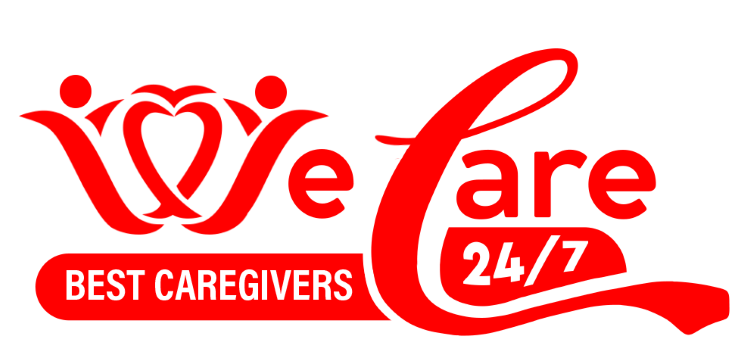Home Care vs. Assisted Living: 6 Differences NJ Families Must Know

Navigating Senior Care Options in New Jersey: A Comprehensive Guide
Choosing the right care option for an aging loved one or yourself is one of the most significant and often emotionally charged decisions a New Jersey family can face. The landscape of senior care offers a diverse array of solutions, with home care and assisted living facilities frequently emerging as the two primary contenders. While both are dedicated to providing essential support and enhancing quality of life for seniors, they operate on fundamentally different models, each with its unique advantages and considerations.
Understanding these core distinctions is paramount for making an informed choice that truly aligns with an individual’s evolving needs, personal preferences, lifestyle, and financial realities. As New Jersey’s senior population continues its steady growth, the demand for comprehensive, reliable care solutions becomes ever more critical. This in-depth guide aims to illuminate the key differences between in-home care and assisted living, offering clarity and practical insights to families navigating these complex decisions and helping them weigh the pros and cons for their unique situation.
1. Environment and Familiarity: The Comfort of Home vs. Community Living
One of the most immediate and profound differences between these two care models lies in the physical environment where care is delivered. This choice often profoundly impacts a senior’s emotional well-being and sense of belonging.
The Comfort of Aging in Place
Home care, by its very definition, allows individuals to age in place within the cherished and familiar surroundings of their own home. This means maintaining a lifetime of accumulated memories, personal routines, and beloved possessions. For many New Jersey seniors, the thought of leaving their long-time residence, perhaps the family home where they raised children or spent decades, can be a source of significant anxiety, grief, and disorientation. Staying at home allows them to continue enjoying their garden, their favorite chair, the proximity to familiar neighbors, and the presence of their pets, all of which contribute significantly to their comfort and mental stability.
This option supports a seamless continuation of life as they know it, reducing the stress of adapting to an entirely new environment. While some home modifications might be necessary for safety or accessibility (such as grab bars or ramps), these are often less disruptive than a full relocation. The psychological benefits of retaining independence and familiarity in one’s personal space cannot be overstated for many seniors.
Transitioning to a Communal Environment
In stark contrast, assisted living facilities are communal residential settings, specifically designed for senior living. While they offer private or semi-private apartments, residents must adapt to a new physical space, which often necessitates downsizing personal belongings. This transition can be challenging, requiring an adjustment period as individuals acclimate to new layouts, shared common areas, and different daily rhythms.
However, this new environment also brings significant benefits. Assisted living communities are built with seniors’ needs in mind, featuring accessible layouts, emergency call systems, and often beautiful, safe communal spaces like dining rooms, activity rooms, and outdoor areas. For some, the change of scenery and the fresh start in a structured, supportive community setting can be a welcome adjustment, fostering new social connections and a renewed sense of purpose outside the confines of their individual home.
2. Independence and Control: Tailored Autonomy vs. Structured Support
The degree of independence and personal control an individual retains is another critical differentiator that impacts daily life and self-perception.
Maintaining Personal Autonomy at Home
With home care, the senior remains largely in charge of their daily life and schedule. Care plans are highly personalized and adapt to their existing routines and preferences, not the other way around. They decide what time to eat, what activities to pursue, when to wake up, and who visits their home. This high level of autonomy is particularly appealing for those who deeply value their self-determination and wish to maintain their established lifestyle, habits, and privacy as much as possible. It empowers them to continue making independent choices about their personal life, even as they receive support for specific tasks.
The caregiver’s role is to support and facilitate the senior’s choices, not to dictate them. This means if a senior prefers to sleep late, eat dinner at 8 PM, or spend the afternoon reading in silence, the home care plan is designed to accommodate these preferences, rather than requiring adherence to a community-wide schedule.
Independence Within a Structured Framework
Assisted living facilities, while actively promoting independence, operate within a more structured framework. There are typically set meal times in a communal dining room, planned group activities, and community-wide rules and schedules. While residents have considerable personal freedom within their private apartments, the overall daily schedule and the array of social and recreational offerings are determined by the facility.
This structure can be highly beneficial for individuals who thrive with routine, appreciate having decisions about daily logistics (like meal planning or activity scheduling) managed for them, and prefer a predictable environment. It reduces the burden of planning and organizing, allowing residents to focus on engagement and relaxation. However, it does mean ceding some degree of spontaneous personal control and adapting to a community rhythm rather than solely one’s own.
3. Scope of Services and Customization: One-on-One vs. Group Amenities
The types of services offered and how they are delivered vary significantly, impacting the level of personalized attention and the breadth of available support.
Highly Personalized In-Home Support
Home care agencies, like WeCare Home Caregivers, provide highly individualized, one-on-one assistance directly in the client’s home. Services are meticulously customized to the individual’s specific needs, ranging from personal care (Activities of Daily Living or ADLs like bathing, dressing, grooming, toileting, transferring, and feeding), to instrumental activities of daily living (IADLs) such as medication reminders, meal preparation, light housekeeping, laundry, running errands, and transportation. Caregivers focus solely on the client’s needs during their scheduled shifts, ensuring dedicated, undivided attention.
This allows for precise tailoring of support as needs evolve, from just a few hours a week for companionship and light help to 24/7 live-in care for more extensive needs. Beyond basic assistance, many home care agencies can also provide specialized services such as dementia care, post-operative support, hospice care coordination, or even skilled nursing services if required, all within the comfort of the senior’s home. The flexibility means services can be adjusted seamlessly as health conditions change.
Comprehensive Community Amenities
Assisted living facilities offer a broader array of services that are typically part of a base monthly package, with additional services often available for an extra fee. These usually include three nutritious meals a day served in a communal dining room, regular housekeeping and laundry services, scheduled transportation, medication management, and a rich calendar of social, recreational, and educational activities.
While personal care assistance is readily available, it is often provided by a team of caregivers serving multiple residents, meaning the attention may not be as consistently one-on-one as with in-home care. The primary advantage here is the sheer convenience of having many services and amenities under one roof, creating a comprehensive, supportive environment where residents have immediate access to everything they need. The comprehensive nature of services is a significant draw for those who prefer an all-inclusive living solution.
Understanding Service Tiers and Staffing
It’s crucial for families to understand the tiers of care offered in assisted living. Many facilities use a point system or tiered model where a base fee covers general services, and additional fees are assessed based on the level of assistance required (e.g., help with one ADL vs. multiple, incontinence care, extensive mobility assistance). Staff-to-resident ratios also vary significantly between facilities and across different shifts, impacting the immediacy and duration of individual attention a resident receives.
4. Cost and Financial Models: Hourly vs. Monthly Fees
Understanding the financial implications and navigating payment options is a paramount concern for New Jersey families, as costs can vary widely.
Flexible, Hourly Home Care Costs
The cost structures for home care and assisted living are quite distinct. Home care is typically charged hourly, meaning families pay only for the specific hours of care provided. This allows for significant flexibility in managing expenses, especially for those with intermittent, lower-level, or evolving needs. While the hourly rate for professional care might seem high on its own, the total cost depends entirely on the number of hours of care required per day or week.
For individuals needing only a few hours of support daily or weekly, or even just companionship a few times a week, home care can be the more economical choice compared to the fixed monthly fee of assisted living. As reported by Genworth’s 2023 Cost of Care Survey, the median monthly cost for a home health aide in New Jersey was approximately $6,101, based on 44 hours per week (which is full-time, 8 hours/day, 5 days/week). This figure clearly illustrates that less than full-time care would result in a significantly lower monthly outlay.
Predictable, All-Inclusive Assisted Living Fees
Assisted living facilities typically charge a flat monthly fee, which covers rent, utilities, meals, a basic level of services, and access to all amenities and activities. Additional care needs (e.g., extensive personal care, specialized memory care, advanced medication management) usually incur extra charges, often tiered based on the level of assistance required, which can add hundreds or even thousands to the monthly bill. The median monthly cost for an assisted living facility in New Jersey in 2023 was approximately $7,478, but this can easily rise depending on the location, luxury level of the facility, and the individual’s specific care needs.
While this provides a predictable monthly expense once the care level is determined, it can be higher than home care for those who only need minimal support. Families should meticulously compare what is included in the base rate and what constitutes an additional charge, to avoid unexpected costs. Some facilities may also have a one-time “community fee” or “move-in fee” that can range from a few hundred to several thousand dollars.
Exploring Funding Avenues in New Jersey
Both home care and assisted living are primarily funded through private pay. However, other options exist:
- Long-Term Care Insurance: Policies vary widely, but many cover a portion of costs for both home care and assisted living, once the policyholder meets specific criteria for needing care.
- Veterans Benefits: The Aid and Attendance Pension may be available to eligible veterans or their surviving spouses to help cover care costs.
- Medicaid Waivers: In New Jersey, programs like the Managed Long-Term Services and Supports (MLTSS) program, part of the state’s Medicaid system, can cover home care and some assisted living services for financially and medically eligible individuals. Eligibility criteria are strict, focusing on low income and asset limits, and a demonstrated need for a nursing facility level of care. It’s crucial to consult with an elder law attorney or a county-level social services agency to understand specific eligibility.
- Reverse Mortgages or Bridge Loans: These are financial tools some families use to access home equity or provide short-term funds while other arrangements are made.
5. Socialization and Community: Intentional Engagement vs. Built-in Interaction
Social interaction plays a vital role in senior well-being, influencing mental health, cognitive function, and overall quality of life. The approach to fostering socialization differs significantly between home care and assisted living.
Facilitating Social Connections at Home
In a home care setting, socialization is often more intentional and tailored to the individual’s preferences. Caregivers can provide valuable companionship, engage in meaningful conversation, play games, read aloud, or simply be a comforting presence. Beyond the home, caregivers can facilitate outings to community centers, senior day programs, local parks, religious services, or family gatherings. They can also assist with maintaining connections with friends and neighbors, providing transportation or even helping to set up virtual calls.
While home care can actively support social engagement, it requires a proactive approach from the individual, their family, or the caregiver to ensure continued social interaction. Without this intentional effort, there is a greater risk of isolation, especially for seniors who are less mobile or have limited local family and friends. The presence of a dedicated caregiver, however, can significantly alleviate feelings of loneliness and provide consistent human connection.
A Vibrant, Built-in Community
Assisted living facilities offer a built-in, readily available community. Residents have immediate access to a diverse group of peers and a wide array of organized social activities. These often include fitness classes (e.g., chair yoga, walking clubs), game nights (bingo, cards), movie screenings, educational programs (lectures, book clubs), art and craft sessions, musical performances, and regular outings to local attractions, shopping centers, or restaurants.
For seniors who thrive on group interaction, enjoy planned activities, and find motivation in shared experiences, this integrated social environment can be a major draw. It removes the burden of seeking out social opportunities, making it easier to connect with others daily. The constant presence of others and the variety of organized programs can significantly combat loneliness and promote a vibrant, active lifestyle. Many facilities also encourage residents to form their own clubs and interest groups, fostering organic social bonds.
6. Progression of Care and Adaptability: Scaling Services vs. Level of Care Transitions
An individual’s care needs are rarely static; they can change gradually or rapidly over time. How each option accommodates these changes is a crucial consideration for long-term planning.
Seamless Adaptation in Home Care
Home care is inherently flexible and highly adaptable. As needs increase, the hours of care can be easily adjusted, and the types of services can be expanded without requiring a disruptive relocation. For instance, if an individual initially needs only companionship and meal preparation, and later requires assistance with mobility, personal care, or medication management, the same agency can often provide these escalated services seamlessly within the home. This might involve increasing daily hours, adding overnight support, or bringing in caregivers with specific training (e.g., for dementia care or transferring assistance).
This allows seniors to remain in their familiar environment even as their health condition evolves, promoting a sense of stability and continuity. Similarly, if needs decrease (e.g., after rehabilitation), care hours can be scaled back. This “aging in place” continuum is a significant advantage for those who prioritize remaining at home for as long as possible.
Transitions Within Assisted Living and Beyond
Assisted living facilities also offer varying levels of care, and many can accommodate increasing needs within their tiered service models. For example, a resident might move from needing minimal assistance to requiring help with most ADLs, with their monthly fee adjusting accordingly. Some facilities are part of a larger “continuum of care” campus (known as Continuing Care Retirement Communities or CCRCs) that may include independent living, assisted living, and skilled nursing facilities, allowing residents to transition between levels of care on the same campus.
However, there may come a point where a higher level of medical or memory care is required that the assisted living facility is not licensed or equipped to provide. In such cases, a resident might need to transition to a dedicated memory care unit (if not already part of the AL community) or a skilled nursing facility, which could mean another disruptive move. Understanding the facility’s full scope of services, its licensing, staff capabilities, and its specific policy on escalating care or requiring a move is essential for long-term planning.
Beyond the Six: Other Critical Considerations for New Jersey Families
While the six core differences highlighted above are paramount, other factors also play a significant role in making an informed decision about senior care in New Jersey.
Quality, Regulation, and Vetting
- State Oversight: In New Jersey, assisted living facilities are licensed and regulated by the Department of Health (NJDOH), which sets standards for care, staffing, safety, and resident rights. Home care agencies are often licensed by the New Jersey Department of Consumer Affairs or operate under specific certifications for their caregivers. Understanding these regulatory bodies and checking their public records for complaints or violations is crucial.
- Caregiver Vetting (for Home Care): For home care, inquire about the agency’s hiring process, including background checks, drug screenings, training protocols (e.g., CPR, first aid, specialized dementia care), bonding, and insurance. This ensures peace of mind regarding the professional who will be entering your loved one’s home.
- Staffing (for Assisted Living): Ask about staff-to-resident ratios, especially during nights and weekends. Inquire about staff turnover rates and the availability of licensed nurses on site.
Emergency Protocols and Safety
Consider how each option handles emergencies. In an assisted living facility, there are typically emergency call systems, staff on duty 24/7, and established protocols for medical emergencies, fires, and natural disasters. For home care, emergency preparedness involves clear communication with the agency, having an emergency contact plan, and ensuring the caregiver is trained in first aid and knows how to respond effectively to unforeseen situations in the home.
Family Involvement and Logistics
The role of family can vary. In home care, families often play a more direct role in managing schedules, communicating with caregivers, and handling finances. In assisted living, much of the daily logistics are handled by the facility, freeing up family members to focus more on quality time and emotional support. Consider how much involvement your family can realistically provide and what level of responsibility you wish to retain.
Making an Informed Decision: A Step-by-Step Approach for NJ Families
Deciding between home care and assisted living is a deeply personal journey, with no single “right” answer. The best fit depends entirely on the individual’s current health status, personal preferences, financial situation, and long-term goals. For many New Jersey families, the strong desire to preserve independence and the comfort of one’s own home makes home care an incredibly appealing choice, especially when needs are moderate or the focus is on companionship and light assistance.
To ensure you make the most confident and beneficial decision, consider the following steps:
- Conduct a Thorough Needs Assessment: Honestly evaluate the senior’s current physical, cognitive, and social needs. How much assistance is truly required for ADLs and IADLs? What are their preferences regarding social interaction, privacy, and routine?
- Evaluate Your Financial Situation: Understand your budget, potential payment sources (private funds, LTC insurance, VA benefits, Medicaid waivers), and long-term financial stability. Get clear quotes and understand all potential costs from both home care agencies and assisted living facilities.
- Prioritize Personal Preferences: What matters most to the senior? Is it staying in their familiar environment, having constant social interaction, maintaining complete control over their schedule, or having all services conveniently under one roof?
- Research and Compare: Look into specific home care agencies and assisted living facilities in your desired New Jersey location. Check their reputations, read reviews, and verify their licensing with the appropriate state authorities (NJDOH for AL, NJ Dept. of Consumer Affairs for home care agencies).
- Visit and Interview: If considering assisted living, schedule tours, ask detailed questions about staffing, activities, and emergency protocols. If considering home care, interview prospective agencies and caregivers, discussing their training, experience, and compatibility.
- Consult Professionals: Don’t hesitate to seek advice from geriatric care managers, elder law attorneys, financial advisors specializing in elder care, and healthcare professionals. They can provide invaluable guidance tailored to your specific circumstances and help navigate complex legal and financial aspects.
WeCare Home Caregivers is dedicated to providing compassionate, professional in-home support throughout New Jersey, empowering seniors to live life on their own terms, comfortably and confidently, in the environment they cherish most. By carefully evaluating these key differences and taking a proactive, informed approach, New Jersey families can confidently choose a care solution that truly supports their loved one’s well-being and enhances their quality of life for years to come.



